2018 Toyota Camry Review

How do you even review the Toyota Camry? Since its introduction three decades ago, this stalwart sedan has transformed into a red-white-and-blue icon, become an interwoven part of American society, the warp to democracy’s weft, like Uncle Sam or childhood obesity.
Speaking ill of this car feels tantamount to burning the flag or calling Harriet Tubman a degenerate vagrant. For 15 consecutive years, Camry has been America’s best-selling car, the go-to option for folks that want as much servility in a motor vehicle as they do reliability.
Since it was introduced in 1982, Toyota has delivered more than 18 million copies globally. To continue this showroom success, it has thrown the baby out with the proverbial bathwater, transforming this venerable nameplate from the ground up.
Completely redesigned, fully overhauled, totally updated, this is the first all-new Camry in 35 years; about the only thing that carries over from its predecessor is the shiny Toyota badge.
FAST FACTS
| Engine: | 2.5L inline-four |
| Output: | 203 hp, 184 lb-ft torque |
| Transmission: | 8-speed automatic |
| US Fuel Economy (MPG): | 28 city, 39 hwy, 32 combined (est) |
| CAN Fuel Economy (L/100 km): | 8.4 city, 6.0 hwy, 7.3 combined |
| US Price: | Starts at $24,884 including delivery, $35,835 for top trim |
| CAN Price: | TBA |
Old Name, New Coke?
Designers even created a custom mid-century-modern font for the Camry name, which is spelled out in individual letters on the car’s decklid. That’s how serious they were about renovating this car.
In fact, striking design is one of this 2018 model’s fundamental themes. No longer content being typecast as dependable but drowsy, Toyota is striving to craft more emotional vehicles, to banish the boring. Undoubtedly, designers and engineers hope you’ll find the styling assertive and interesting. Up front, there’s a bold face and available LED headlamps.
Surprisingly, the grille varies depending on which model you get. Standard versions, like the fairly basic LE car tested here, are graced with an outstretched, ribbed affair. Sportier SE and XSEs receive a mesh treatment that’s considerably more attractive. Add them all up and between the conventional and hybrid models, there are at least 10 variants of the car, which is kind of crazy, but Toyota is keen on offering something for everyone.
All in the Family
Sharing fundamental underpinnings with the Prius hybrid, this sedan rides atop the Toyota New Global Architecture, TNGA for short. Accordingly, it’s torsional rigidity has been increased by 30 percent and it gains double-wishbone rear suspension, among countless other improvements.
Thanks to a focus on engaging dynamics and its lower center of gravity, this car is more fun than any Camry before. It also comes standard with Toyota Safety Sense P, the brand’s suite of advanced driver-assistance technology, which includes things like adaptive cruise control, pre-collision braking, and automatic high beams. This car is also more fuel efficient and refined than ever before.
Skyactiv, EarthDreams, Dynamic Force?
As in years past, three powertrains are offered in the Camry, including a 3.5-liter V6 with 301 horsepower and a hybrid that in base form is estimated to average as much as 52 miles per gallon. Watch out, Prius!
ALSO SEE: 2018 Toyota Camry Gets Aggressive Overhaul
But the volume leader is an efficient and refined four-cylinder, now suspended on a quartet of mounting points for reduced noise and vibration. Totally redesigned, 2018’s offering displaces 2.5-liters and delivers up to 206 horsepower and 186 lb-ft of torque in XSE models. Serving in the high-volume LE version it’s rated at a skosh less, 203 ponies and 184 units of twist. An eight-speed automatic transmission is standard in all non-hybrid Camrys.
That’s par for the course in the midsize segment these days, but it’s worth nothing just how far things have come over the last 30-odd years. For a dash of perspective, its ancestor from 1983 had half as many gears and just 92 horses on tap.
Minimizing your fuel spend, this is one seriously economical car. LE models should sticker at 28 miles per gallon city, 39 highway and 32 mpg combined. Toyota is gunning for best-in-class efficiency with the 2018 Camry and it looks like they might have achieved it.
ALSO SEE: 2018 Toyota Camry Adopts Linux-Based Infotainment
But following Mazda and Honda’s lead when it comes to ridiculous names, this new engine is called a “Dynamic Force” four-cylinder, which is, thankfully, not quite as ridiculous as Skyactiv or EarthDreams but it still makes me shake my head.
Fortunately, a questionable name can’t sink a good product, and after spending a chunk of time driving this fresh-faced four-door family hauler, I can tell you Toyota’s promise of more passion isn’t just marketing speak. They’ve actually delivered, and more than I ever expected.
Welcome Home!
The new Camry’s styling assertiveness carries through inside, where its cabin is tasteful and premium. There are soft plastics where you want them and plenty of intuitive technology. Thanks to trim A-pillars and a hood that’s nearly two inches lower than its predecessor’s, forward visibility is unhindered.
There’s plenty to praise here, though there are a few minor missteps worth mentioning. Bargain-basement plastic dominates the console, looking like an unfinished prototype component, plus there’s some odd trim running across the dashboard. In addition to this, the center stack is a mishmash of fonts and button styles. Some consistency would have made things look significantly richer.
Also, Toyota still refuses to offer Apple CarPlay or Android Auto. Instead, it is pushing its own infotainment system, which it claims provides a more integrated experience, whatever that means. People want seamless connectivity and these two systems provide it, not their offering, which, for whatever reason, refused to connect to a Samsung smartphone provided for demonstration.
ALSO SEE: The 5 Worst Infotainment Systems on the Market
Fortunately, folks of the taller persuasion are sure to appreciate Camry’s backseat, which is roomy in every dimension, a boon for knees, heads, and hips.
This all-new car’s trunk is likewise huge at up to 15.1 cubic feet, with a broad opening and low lift-over height. Beyond this, the lid now features reengineered hinges so it opens further forward, meaning you’re less likely to bang your head while loading items.
The Drive
Driving dynamics are probably one of the least important purchase considerations for Camry customers, falling somewhere between carpet-pile height and its resistance to root-knot nematodes. Still, the 2018 model aces what counts in the segment: It’s efficient, refined, spacious, and, we’ll get to this later, affordable. Despite all this left-brain stuff, Toyota has worked tirelessly to deliver an engaging on-road experience, but did it succeed?
Acceleration is more than adequate, with the engine and eight-speed transmission working hand-in-glove. You can really feel that they were developed by a dedicated team that was all on the same page because they perform beautifully.
ALSO SEE: 2016 Honda Accord vs 2016 Toyota Camry
This four-banger is extremely refined and provides a powerband that’s surprisingly broad, which means you don’t need wide-open throttle just to get moving. Shifts are also quick and well timed with no bad habits or misbehavior noticed during testing.
If a mass-market model is just too common for you, consider the optional V6. I briefly sampled an XLE example fitted with this engine and it was rocket fast. Smooth and swift with a snarly sound, this 3.5-liter unit moved the car briskly when you planted your right foot. But it’s really too bad, only about 6 percent of Camry buyers opt for this engine and I wonder why Toyota continues to offer it given the four-cylinder’s dominance.
Toss the new Camry into a corner and it does what you expect. The LE model is definitely softer than any of the trims with “S” in their name, but it never wallowed or flopped around like a tetherball. The ride is quiet and smooth with a wisp of body roll while cornering. Unfortunately, the LE’s eco-friendly P215/55/R17 tires do make a bit of ruckus when pressed.
Refreshingly, this car’s steering is sharp, with a welcome crispness on center and an inspiring amount of heft. Never has a Camry felt so good to drive, which is sure to please first-time buyers and probably surprise repeat customers.
The Verdict: 2018 Toyota Camry Review
How does this new Camry compare to major rivals? That’s a tough question to answer without conducting an exhaustive comparison test, but the Mazda6 is still probably a bit more fun to drive and I think Ford’s Fusion looks nicer, but this is no knock against the all-new Camry, which is a wallflower no more; it actually has emotional appeal.
The 2018 model still provides everything drivers expect in a Toyota sedan – roominess, efficiency, comfort, and reliability – but it also offers dramatically more style and better performance.
ALSO SEE: 2018 Toyota Camry Arrives Late Summer, Click Here for Pricing
To continue its three-decade-long winning streak, the all-new version is set to go on sale next month with a base price of a little more than $24,000. For a slightly more upscale LE version plan on spending about a grand more. A range-topping XSE V6 kicks off at less than $36,000.
Discuss this review on our Toyota Forum
LOVE IT
- The best-driving Camry ever
- Clear forward visibility
- High fuel efficiency
- Roomy interior
- Bold design
- Big trunk
LEAVE IT
- No Apple CarPlay or Android Auto
- Some budget interior materials

Born and raised in metro Detroit, Craig was steeped in mechanics from childhood. He feels as much at home with a wrench or welding gun in his hand as he does behind the wheel or in front of a camera. Putting his Bachelor's Degree in Journalism to good use, he's always pumping out videos, reviews, and features for AutoGuide.com. When the workday is over, he can be found out driving his fully restored 1936 Ford V8 sedan. Craig has covered the automotive industry full time for more than 10 years and is a member of the Automotive Press Association (APA) and Midwest Automotive Media Association (MAMA).
More by Craig Cole





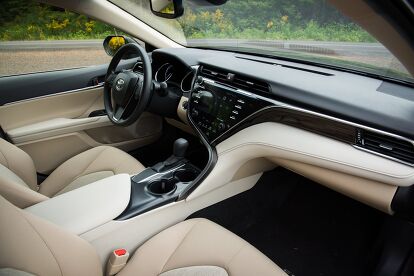























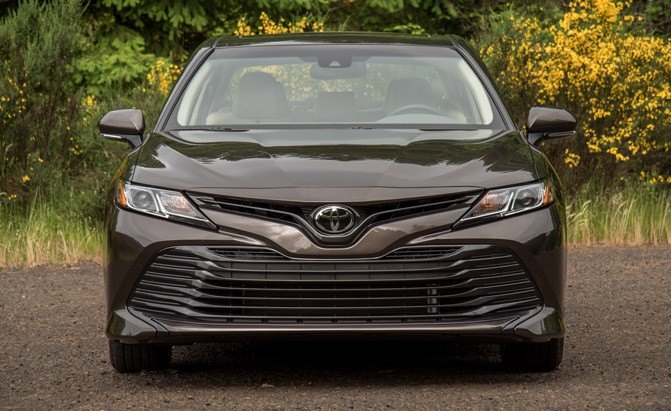



















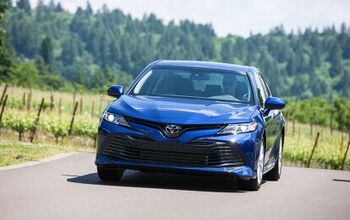
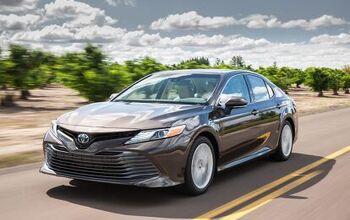
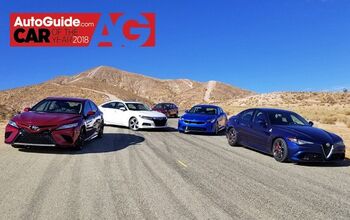

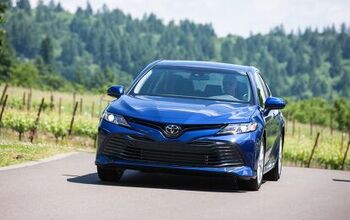



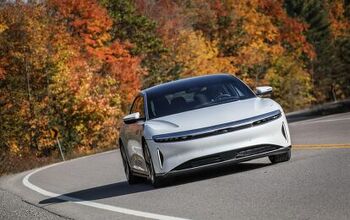


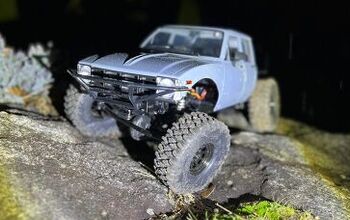



Comments
Join the conversation
I don't understand why Toyota made so ugly design (the front grill) for such a nice car. This grill, I suspect, resulted in huge sales decline in compare with competitor like Altima and Accord. It looks like Toyota does not have an exterior designer with a good taste or this designer (or designer team) works for Toyota competitors. This ugly exterior forces me to switch to Accord. It's too sad for as I had Toyotas during my life.
The biggest problem with the new Toyotas is their retrograde navigation/infotainment system and lack of connectivity. V. slow to load, lacking in features and downright dangerous for a driver to use. Google Toyota's Entune App Suite is breaking Camrys.